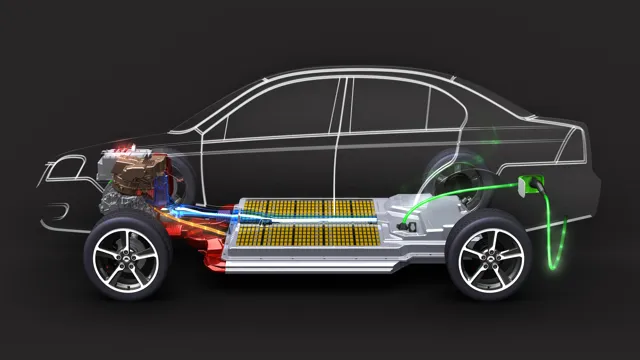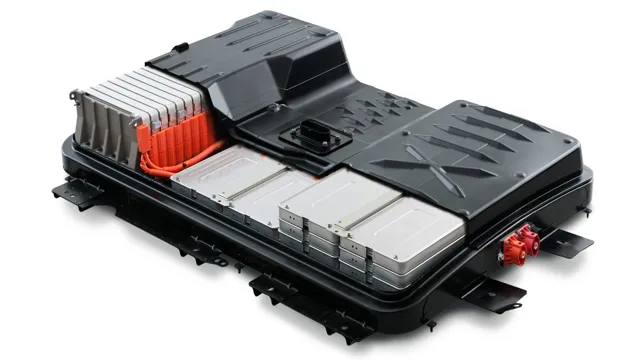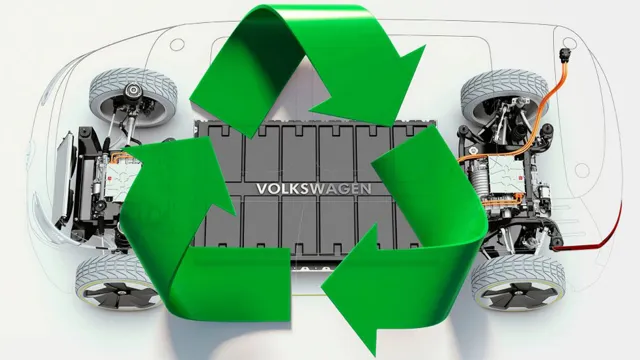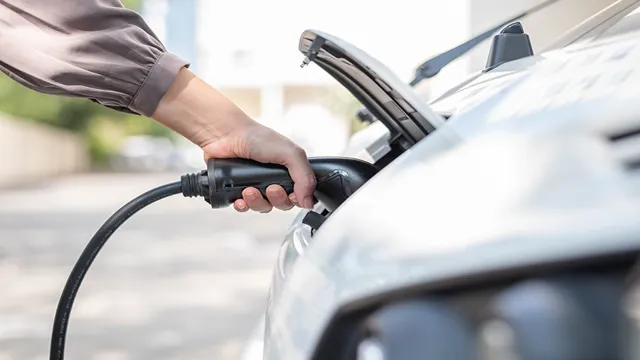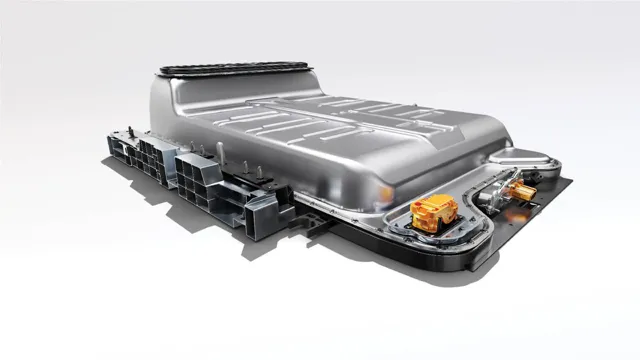Stuck on the Side of the Road? Don’t Panic: Tips for Dealing with an Electric Car Running Out of Battery
As electric cars become more prevalent on our roads, concerns about what happens when an electric car runs out of battery are becoming more common. This is a valid concern, as nobody wants to be stranded in the middle of nowhere with a dead electric car! But, like with any vehicle, there are potential solutions and precautions to take to prevent getting yourself into this dire situation. Think of it like a cell phone battery – you know that you have a finite amount of time before it needs to be charged again.
Electric cars work in a similar way, but with better longevity. When the battery runs low on an electric car, there are often warning signals that will alert the driver, giving them time to find a charging station or make a plan to get to one. It’s essential to take these warnings seriously and act accordingly, as letting the battery run completely dead can cause irreversible damage.
Some of the precautions electric car drivers can take are similar to what you’d do before going on a long road trip – plan ahead! Research charging stations along your route and make a mental (or written) note of where they are located. Depending on your car’s range, you may need to stop more frequently than you would with a gasoline car – but that doesn’t have to be a bad thing! Stretch your legs, grab a snack, and enjoy the break in your journey. In conclusion, running out of battery on an electric car is not something to be taken lightly, but it’s also not a guaranteed disaster.
By taking the necessary precautions, researching charging stations along your route, and listening to your car’s warnings, you can avoid being stuck in the middle of nowhere with a dead battery. As with any trip, it’s all about being prepared so that you can have a safe and enjoyable journey!
Causes
One of the biggest concerns with electric cars is the fear of running out of battery. There are several causes that can contribute to this issue. First, it’s important to understand that range can vary depending on factors such as driving habits, weather conditions, and terrain.
For example, driving at high speeds or using features like air conditioning or heating can drain the battery quicker. Another cause is the lack of charging infrastructure in certain areas, meaning drivers may not have access to charging stations when needed. It’s also important to note that battery degradation over time can result in a shorter range, especially for older electric cars.
To avoid the risk of running out of battery, it’s important to plan ahead and research charging options in advance. It’s also recommended to monitor the car’s range and charge level regularly, and to adjust driving habits to conserve energy when necessary.
1. Battery Capacity
One of the main causes of reduced battery capacity in our devices is regular usage over time. As we use our smartphones, tablets, or laptops, the battery goes through a cycle of discharging and charging, which eventually degrades its capacity. The number of charging cycles the battery goes through can accelerate this process and lead to reduced performance over time.
Moreover, environmental factors such as exposure to heat or cold can also affect the battery life and capacity. Similarly, using the wrong charger or cable can also damage the battery in the long run. Therefore, to maintain the long-term health of the battery, one must be mindful of how they use their devices and ensure that they keep them in a moderate temperature range and use high-quality chargers and cables.
By doing so, we can ensure our device lasts longer and performs at optimum levels.

2. Driving Conditions
When it comes to driving, there are many factors that can impact the safety of you and other drivers on the road. One major cause of driving accidents is the driving conditions themselves. Poor weather conditions such as heavy rain, snow, or fog can reduce visibility and lead to slippery roadways, making it more difficult to maneuver your vehicle safely.
Additionally, uneven or poorly maintained roads can throw off your car’s balance and cause accidents. It’s important to adjust your driving habits to the conditions around you, slowing down and increasing following distance when the roads are wet or icy. By paying attention to the road conditions and adjusting your driving accordingly, you can keep yourself and others on the road safe.
Remember: safety is always the top priority while driving!
3. Driving Habits
When it comes to driving habits, there are a variety of causes that can contribute to accidents on the road. One of the biggest culprits is distracted driving, which includes activities such as texting, talking on the phone, and adjusting the radio. Another common cause is speeding, as driving too fast reduces the amount of time a driver has to react to sudden changes in traffic or road conditions.
Driving under the influence of drugs or alcohol is also a major contributor to accidents, impairing judgment and reaction time. Poor weather conditions, such as rain, snow, or fog, can also make driving more challenging and increase the risk of accidents. It’s important for all drivers to be aware of these potential causes and take steps to minimize their impact, such as staying focused on the road, obeying speed limits, and avoiding getting behind the wheel while under the influence.
By doing so, we can all help make the roads safer for everyone.
Solutions
If you are driving an electric car and it runs out of battery, don’t panic. There are several solutions that can help you get back on the road. The first thing you can try is to look for an electric charging station nearby on your GPS map or smartphone app.
Most electric vehicles have built-in navigation systems that can help you find the nearest charging station. If you are unable to find a charging station nearby, you can call a tow truck or roadside assistance service to help you transport your car to a nearby charging station. Another option is to carry a portable charger with you, which can help you charge your car battery in emergency situations.
It’s essential to plan your route before embarking on your journey and make sure you have enough battery to reach your destination. Regularly checking your battery level and charging it when necessary can help prevent unexpected situations. By following these simple tips, you can avoid getting stranded and enjoy a stress-free electric car experience.
1. Charge your battery regularly
Battery life is one of the most important aspects of mobile devices, and proper charging habits are essential to ensure the longevity of your battery. Charging your battery regularly is the best solution to prevent battery damage and increase its life. Using your device until it completely runs out of battery power and then charging it up to full capacity can cause permanent damage to your device battery.
Instead, try to charge your battery before the battery level goes below 20%. Also, avoid overcharging your device since it can reduce battery capacity over time. It is important to note that not all chargers are created equal, and some low-quality chargers can cause damage to your battery and decrease its lifespan.
Always use the charger that comes with your device or a compatible high-quality charger to ensure optimal charging performance and longevity of your device’s battery. Remember to charge your battery regularly and protect it from overcharging to keep your device running smoothly in the long run.
2. Limit use of high-drain functions
For those looking to reduce their phone’s battery drain, limiting use of high-drain functions is a great way to go about it. One solution is to turn off features like Wi-Fi, Bluetooth, and GPS when not in use, as they can all have a significant impact on battery life. Another solution is to close out of apps and programs when they’re not actively being used, as background processes can also drain battery power.
For those who enjoy playing games or watching videos on their phone, reducing screen brightness can also help prolong battery life. By implementing these solutions and being mindful of high-drain functions, users can enjoy longer-lasting battery life and fewer interruptions throughout their day.
3. Plan your route in advance
When it comes to planning your route in advance and finding the perfect solution, there are several things to consider. First of all, you need to establish your starting point and your destination. This will help you determine the best route, taking into account any potential traffic or time constraints.
One solution might be to use a mapping app on your phone, which can provide real-time traffic updates and alternative routes. Another solution is to use a physical map and plan out your route manually, taking into account any potential landmarks or points of interest. Regardless of which solution you choose, it is important to stay flexible and be prepared for unexpected obstacles.
Whether it’s a detour or a roadside emergency, having a solid plan in place can help you navigate any situation that comes your way. So don’t hesitate to take the time to plan your route in advance, and always stay prepared!
Tips for Drivers
If you’re driving an electric car, the thought of running out of battery power can be a bit daunting. But fear not, there are plenty of tips and tricks to help you avoid that scenario. First, make sure you’re aware of your car’s range and plan your routes accordingly.
This will give you a good idea of how far you can travel before needing a recharge. Second, consider installing a home charger or downloading an app that shows you nearby charging stations. This way, you’ll always know where to go when you need to top up your battery.
Finally, be mindful of your driving habits. Aggressive acceleration and braking can reduce your car’s range, so aim for smooth and steady driving instead. With these tips in mind, you’ll be able to enjoy your electric car without worrying about running out of battery power.
1. Keep in mind the range of the vehicle
When driving an electric vehicle, it’s important to keep in mind the range of the vehicle. Unlike gasoline-powered cars that can be easily refueled along the way, electric vehicles require careful planning to ensure that you don’t run out of power. One tip for drivers is to plan ahead and map out your route before leaving.
This can help you identify charging stations along the way and make sure that you can reach them before your battery runs out. Another tip is to drive conservatively and avoid rapid acceleration or braking, which can deplete your battery more quickly. By being mindful of the range of your electric vehicle, you can avoid getting stranded and enjoy a smooth and stress-free driving experience.
2. Use regenerative braking
Regenerative braking is an excellent way for drivers to reduce fuel consumption and save money. It works by converting the energy of a vehicle’s motion into electricity, which is then used to charge the battery. When you press the brake pedal, the system automatically switches from using fuel to generating electricity.
This not only helps to reduce brake wear but also allows the vehicle to slow down gradually, minimizing the need for sudden acceleration. In addition to saving fuel, regenerative braking also has the added benefit of reducing emissions, making it an environmentally friendly option. So, the next time you’re driving, try to incorporate regenerative braking into your driving routine.
Not only will you save on fuel costs, but you’ll also be making a positive impact on the environment.
3. Keep the battery cool
Keeping the battery cool is crucial for the longevity of your vehicle’s battery. When the temperature rises, the battery’s capacity and lifespan decrease, so it’s essential to take precautions to prevent overheating. One of the best ways to keep the battery cool is to park in a shaded area or in a garage.
When you park your vehicle under direct sunlight, the heat causes the battery to degrade over time. Another way to maintain the battery’s temperature is to avoid using high power electrical devices when the engine is off. These devices can cause a significant drain on the battery, increasing the temperature and reducing its lifespan.
By taking these simple steps, you can significantly prolong the life of your battery and keep your vehicle running smoothly. So, it’s always a good idea to be mindful of the battery temperature, particularly during hot weather days.
4. Monitor your battery level regularly
As a driver, it’s important to keep a close eye on your battery level. Keeping tabs on your battery can save you from any unexpected breakdowns or lengthy waits for a tow truck. So, make sure to check your battery regularly to avoid any nasty surprises on the road.
You can use your car’s dashboard or download apps that can help you monitor your battery level. A low battery level can cause serious trouble, especially in cold weather, so it’s best to keep it charged at all times. Don’t forget to turn off any accessories, such as lights or radios, when your car is not running.
By following these simple tips, you can ensure that your car’s battery stays in good condition and runs smoothly, keeping you safe on the road.
Conclusion
Even the most impressive technological advancements can’t change the laws of physics. Just like how a runner cannot continue without energy, an electric car is bound to run out of battery at some point. So, keep your charging cables handy and enjoy the ride while it lasts!”
FAQs
How do I prevent my electric car from running out of battery?
To prevent your electric car from running out of battery, make sure to plan your route ahead of time and choose destinations with charging stations. It’s also important to monitor your battery level throughout the day and avoid using features that drain the battery quickly, like heating or air conditioning.
What should I do if my electric car runs out of battery?
If your electric car runs out of battery, you will need to bring it to a charging station to recharge. If you are unable to do so immediately, try to find a safe place to park your car and avoid using any electronics or features that will further drain the battery.
How far can an electric car travel on a single charge?
The distance an electric car can travel on a single charge depends on a variety of factors, including the make and model of the car, as well as driving conditions. However, most electric cars can travel between 100-250 miles on a single charge.
Can I charge my electric car using a regular outlet?
While it is possible to charge an electric car using a regular household outlet, it is not recommended as it will take significantly longer to charge the vehicle. It is recommended to use a dedicated charging station, either at home or in a public area, for faster and more efficient charging.
